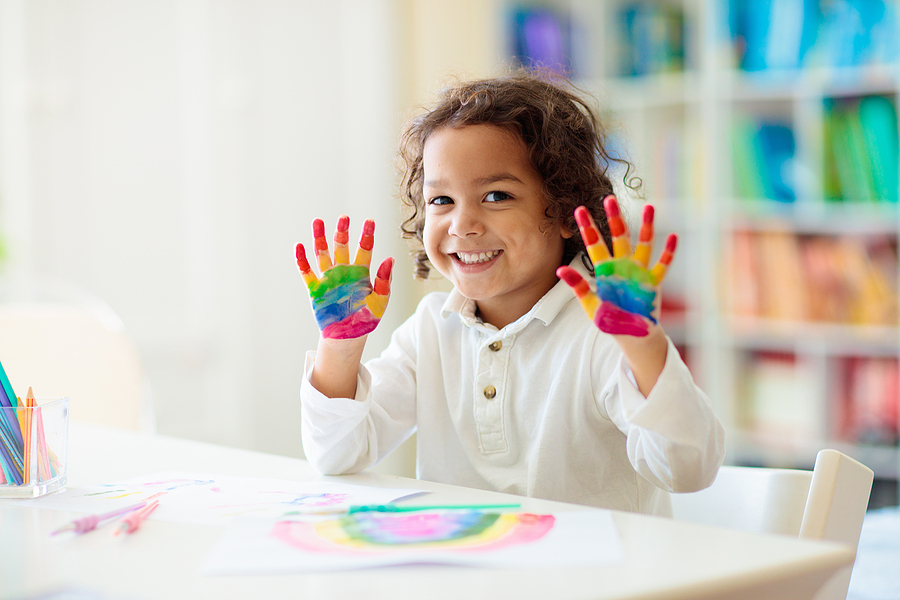Positive Discipline Techniques for Preschool Teachers
Posted On November 15,2023
Teaching preschool is an incredibly fulfilling career. Preschool classrooms are educationally rich environments, and knowing that you are setting your students on a path to educational success makes the challenges well worth it. However, many preschool teachers, especially those just entering the field, worry about preschool behavior. It’s no secret that three and four-year-olds can be difficult to manage on their own, and when faced with a classroom of these young children, many new preschool teachers can feel intimidated about how they will manage all the behaviors they may see during their day. The best way for preschool teachers to manage their classroom is to understand the behaviors and develop strategies for how best to address those behaviors before they turn into an even bigger challenge.

Challenges of Preschool Behavior
Preschool students have unique behavior challenges as they learn how to navigate the school environment. They are developing some independence, but also struggle with separation anxiety. They are learning to problem solve, but still struggle with emotional regulation. Preschool students don’t always have enough impulse control to manage their feelings without outbursts, can channel their newfound independence into bossiness with peers, and sometimes have difficulty following directions, especially as directions get increasingly complex. Preschoolers are better able to verbalize their feelings and recount a story, but they also have strong imaginations and will tell tales to avoid getting in trouble. In short, preschool students are imaginative, fun, and educational sponges, but are still learning to get along with others and find the right way to manage their impulses.
Discipline that Focuses on the Positive
Noticing good behavior is far more effective in managing a preschool classroom than addressing poor behavior. One of the best strategies for preschool discipline is to focus on what students are doing well, or “catch them being good.” For example, instead of reprimanding students who rush to line up in an effort to be first, praise the students who walked calmly, such as,
“I love the way Rosie and Aiden walked to the line. I know I can trust them. Rosie, will you lead us to the playground today?”
Or, when it comes to cleaning up,
“I noticed that Susie made sure to clean up her crayons when she was finished with her picture. Thank you for helping take care of our classroom!”
When you focus on positive behavior, it’s important to make sure that your feedback is specific. Rather than saying “Jake, you are having a great day,” focus on the behavior itself. Some teachers find that using a sticker chart that rewards good behavior is very effective in the classroom. In general, sticker charts that reward the whole class for good behavior, rather than individual charts, work well, although students who struggle with certain behaviors can benefit from their own chart to track behavior.
Start Your ECE Process NowLogical Consequences are a Good Strategy for Preschool
The goal of discipline in preschool is to teach, not punish. Students need to learn why certain behaviors are acceptable and certain behaviors are not. Preschoolers are trying to make sense of the world. Logical consequences are an excellent way to guide behavior. When the consequence doesn’t “match” the behavior, the lesson often doesn’t stick. For example, if a student throws a toy at another student, a logical consequence is to remove that toy because the student demonstrated they couldn’t play with it safely. The student understands that if they can’t play with toys correctly, they won’t have the chance to play with them at all. If a student throws a toy and their consequence is that they move a clip on a chart and don’t get a sticker at the end of the day, they have a difficult time making the connection between the behavior and the result. The misbehavior happened long before the sticker came into play. Logical consequences can work with many different behaviors. The goal is always to connect the specific behavior with the result.
Set Up Your Preschool Classroom to Prevent Discipline Issues
Sometimes the way you structure your classroom can help prevent discipline problems before they start. A well-organized classroom with established routines will let students know what is expected of them. When students are overwhelmed or feel out of control, they are far more likely to act out. Structure will help students understand the expectations and do their best.
Many successful preschool teachers help their students understand how to name their emotions and react to them, so when students get upset, they are prepared to handle them. Students need to know that it is ok to feel angry or frustrated, but it is not ok to hurt someone or destroy property because of that anger. Make a point to roleplay with the situations that your students may find themselves in during the school day. When removed from the emotion and frustration of the situation in the moment, preschool students may be able to help brainstorm ways to help resolve things that might ordinarily cause discipline issues. When the situation presents itself, remind the students of the strategies you practiced to manage that frustration, such as deep breathing or words they can use.

Discipline in preschool works best when it is used in a caring and consistent way that focuses on teaching correct behavior, not punishing bad behavior. Model and teach exactly what you want from your students, and lavishly praise them when they get it right. Preschoolers want to please you, and with the right strategies, you can have a kind and respectful preschool classroom. If you’ve always thought you would be a great teacher, contact Athena Career Academy to learn more about how to enroll in our comprehensive early childhood education degree program.